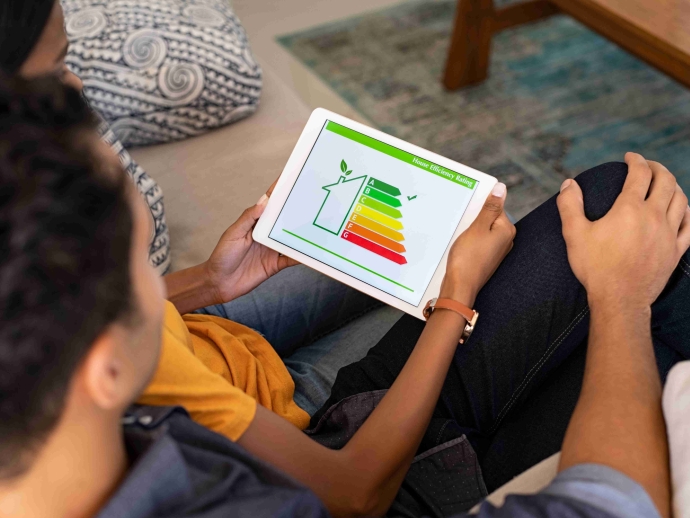The Ultimate Guide to Solar Monitoring Apps

Harnessing solar energy is a fantastic way to reduce your carbon footprint and lower electricity bills. However, to truly maximize the benefits of your solar panel system, you need to monitor its performance effectively. Solar monitoring apps provide real-time insights into your system's energy production, helping you identify potential issues and optimize energy consumption. This guide will walk you through popular monitoring apps, key performance metrics, and troubleshooting common problems, empowering you to get the most out of your solar investment.
Why Use a Solar Monitoring App?
Solar monitoring apps are software platforms that track the performance and efficiency of your solar energy system. They collect data from your inverter—which monitors the energy produced by your solar panels—and transmit it via Wi-Fi to your device, providing real-time production and usage statistics. Proactively checking how much energy you’re creating and using is essential to get the most out of your system.
Here’s why these apps are invaluable:
-
Real-time Data: Access up-to-date information on your system's status, energy yield, and overall health.
-
Performance Insights: Understand how much power your panels are generating over time with detailed reports.
-
Early Issue Detection: Quickly identify any faults or drops in energy production to prevent costly repairs.
-
Energy Management: Optimize your energy usage by aligning consumption with peak sunlight hours.
Popular Solar Monitoring Apps
Many solar monitoring apps are available, each offering unique features and benefits. Here are some of the top options:
-
Enlighten App (Enphase): This app provides real-time data on energy production, allowing you to monitor your system's performance and make necessary adjustments. It features a user-friendly interface and is compatible with both Android and iOS devices. Enphase’s microinverters are rated to withstand harsh weather conditions.
-
Pros: Simple, easy-to-use interface. Compatible with iOS, Android, and web devices.
-
-
MySolarEdge Monitoring App (SolarEdge): Designed for SolarEdge systems, this app offers real-time insights into energy production and consumption, ensuring optimal efficiency. It provides detailed performance data for each panel individually. The app also allows you to activate and schedule smart devices to direct available solar or battery power to essential appliances.
-
Pros: Panel-level monitoring with DC optimizers. Integration with smart home devices.
-
-
Fronius Solar.web App: Compatible with Fronius inverters and smart meters, this app tracks energy production, consumption, and environmental savings in real time. With an intuitive interface and Apple Watch compatibility, monitoring your system is easy, whether you're at home or on the go. The app also keeps track of your entire history from day one and allows for forecasting your energy usage.
-
Pros: Compatible with Apple Watches. Easy-to-read stats and energy yields. Minimalist UI with easily understandable display values.
-
-
SMA Sunny Portal App: This comprehensive app is designed specifically for SMA inverter systems, providing real-time data on energy production and consumption. Whether you have an Android or iOS device, you can download the app for free and start monitoring your solar panels with ease.
When choosing an app, make sure it’s compatible with your specific solar panel system for seamless integration and accurate data monitoring.
Understanding Performance Metrics
Solar monitoring apps provide a wealth of data. Here are some key performance metrics to watch:
-
Energy Production (kWh): The amount of electricity your solar panels generate over a specific period (e.g., daily, monthly, annually).
-
System Efficiency (%): The ratio of the actual energy output to the expected energy output, indicating how well your system is performing.
-
Self-Consumption (%): The percentage of solar energy you use directly instead of sending it back to the grid.
-
Grid Feed-in (kWh): The amount of excess solar energy you send back to the grid.
-
Performance Ratio: This metric compares your system's actual output to its potential output based on sunlight and temperature conditions.
By monitoring these metrics, you can assess your system’s health and optimize its performance.
Troubleshooting Common Issues
Even with a well-maintained system, issues can arise. Here are some common problems and how to address them:
-
Reduced Energy Production:
-
Possible Cause: Shading, dirt or debris on panels, or panel degradation.
-
Troubleshooting: Trim trees to reduce shading, clean panels regularly, and inspect panels for damage.
-
-
Inverter Faults:
-
Possible Cause: Overheating, voltage fluctuations, or component failure.
-
Troubleshooting: Ensure proper ventilation around the inverter, check voltage levels, and consult a professional for repairs.
-
-
Connectivity Problems:
-
Possible Cause: Wi-Fi signal issues or app glitches.
-
Troubleshooting: Check your Wi-Fi connection, restart the inverter and monitoring device, and update the app to the latest version.
-
Conclusion
Solar monitoring apps are essential tools for any solar panel system owner. They provide valuable insights into your system's performance, allowing you to maximize energy production and savings. By choosing the right app, understanding key metrics, and addressing common issues promptly, you can ensure your solar investment pays off for years to come.
Ready to take control of your solar energy production and maximize your savings? Contact us now for expert assistance in setting up and optimizing your solar monitoring system. Our team is here to help you every step of the way, ensuring you get the most out of your solar investment. Don't wait—start maximizing your savings today!

